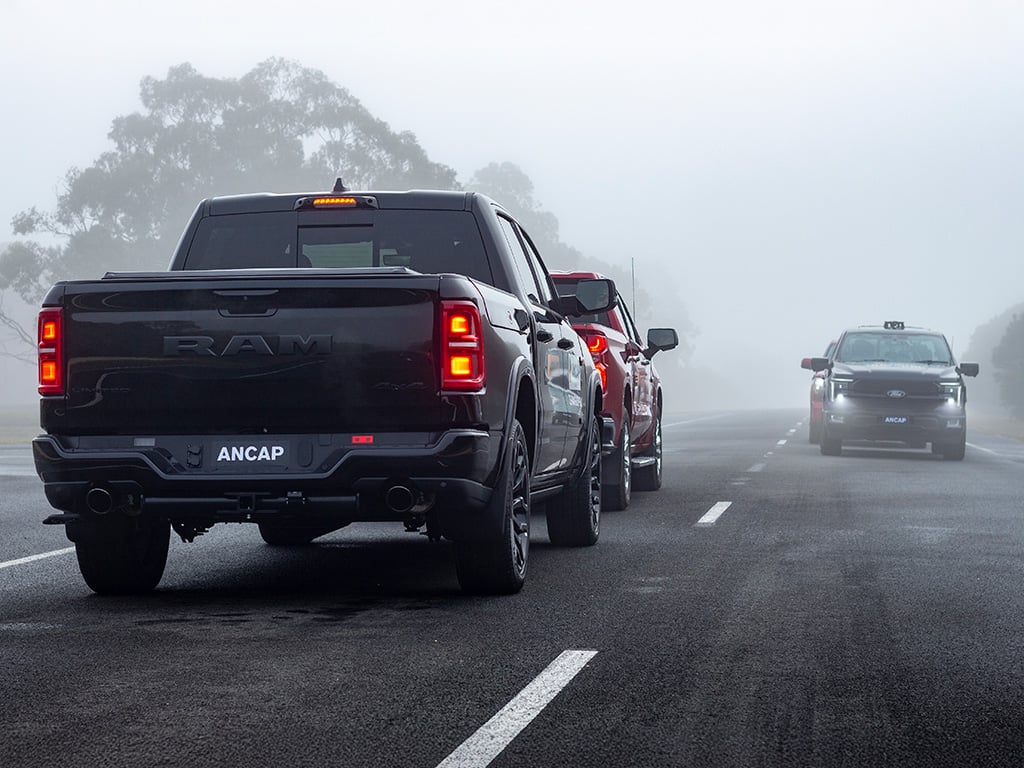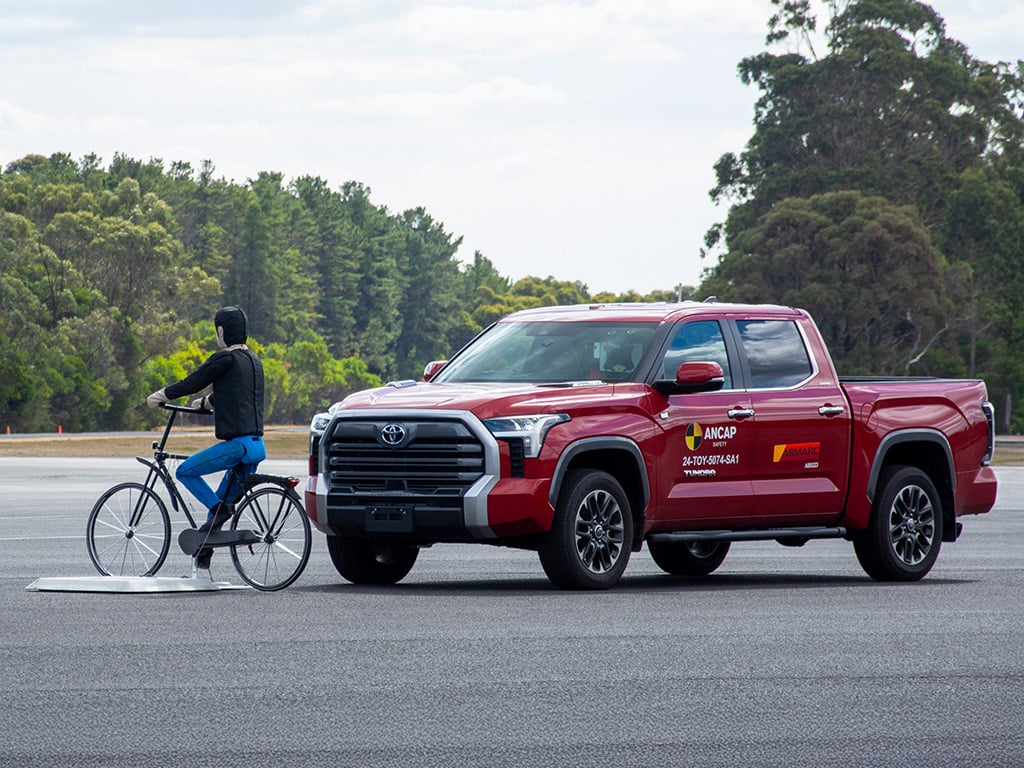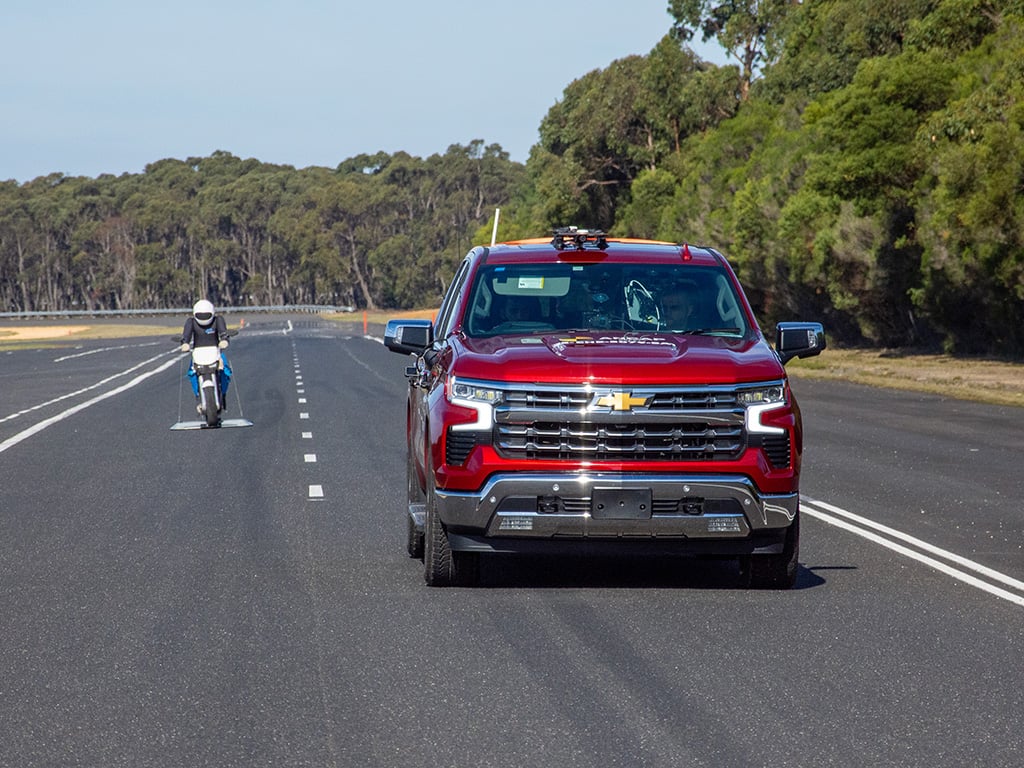Full-size pickups have been tested by independent auto safety authority ANCAP for the first time, with the Ford F-150 coming out on top against the Ram 1500, Toyota Tundra and Chevrolet Silverado.
ANCAP put the American pickups up against the Toyota LandCruiser 70 Series in its inaugural Large Utilities ADAS [Advanced Driver Assist Systems] Safety Comparison’.
As the name suggests, however, no physical crash-testing was involved; the American pickups still have never been crash-tested by ANCAP, while the 70 Series was last tested in single-cab/chassis guise in 2016.
ANCAP tested the American pickups due to their growing popularity, pointing to around 22,500 full-size pickups being sold annually here and sales of the F-150, Tundra, Silverado and Ram 1500 increasing 270 per cent since 2019.
“Larger vehicles pose a bigger threat to other road users than passenger cars,” ANCAP chief executive officer Carla Hoorweg said in a statement.
CarExpert can save you thousands on a new car. Click here to get a great deal.

“The best way to reduce the potential risk of fatalities and serious injuries from large vehicles is to make sure they do the best possible job at avoiding a crash.
“We have applied international best practice in safety testing to this segment to make sure there is an incentive for manufacturers to improve crash avoidance technology.
ANCAP said in the report: “Learnings from these early comparisons will inform the development of a framework for future testing and assessment, with physical crash protection and driver vision under consideration.”
While it looks the odd one out in this group, ANCAP included the LandCruiser 70 Series due to its gross vehicle mass (GVM) being increased to more than 3500kg in 2024.
Despite its advanced age, the Toyota managed to beat the newer Chevrolet Silverado despite having a less comprehensive suite of active safety equipment.

Carried out at the Australian Automotive Advanced Research Centre (AARC) near Anglesea, Victoria, each vehicle evaluated saw 48 different situations testing various ADAS systems’ effectiveness.
Systems tested include autonomous emergency braking (AEB), lane support systems and features such as speed limit reminders and driver fatigue monitoring.
The scenarios included a car at an intersection; a pedestrian crossing a road; avoiding a child while reversing; cyclists; approaching a vehicle from behind; and an oncoming motorcycle.

The results saw an overall safety grading of Platinum (80-100 per cent), Gold (60-79 per cent), Silver (40-59 per cent), Bronze (20-39 per cent), or Not Recommended (0-19 per cent) for each vehicle.
The F-150 Platinum SWB – recently announced as part of the first F-150 update since 2023 – scored best overall and was the only vehicle to achieve, appropriately enough, a Platinum rating with 81 per cent overall.
ANCAP praised the F-150 for its superior ability during testing when it came to AEB, avoiding rear-end collisions when approaching vehicles from in front or behind.
It also performed best for car-to-cyclist performance, while the Ford also proved the most effective at avoiding collisions with motorcyclists.

The Ram 1500 was marginally behind, with a Gold rating, with the Toyota Tundra and LandCruiser 79 Series rated Silver – with the 79 Series criticised for its lack of active lane support.
The Chevrolet Silverado 1500 LTZ performed the worst with its Bronze rating seemingly optimistic given its 27 per cent score.
The Silverado, fitted with camera-only AEB, was rated zero out of six for AEB car-to-cyclist effectiveness, and weak – with 0.5 out of three – for speed assistance systems.
ANCAP praised the Silverado’s “foundational car-to-car” autonomous braking but was critical of its effectiveness in negotiating vulnerable road users.
The ratings are valid until the end of 2026, with ANCAP suggesting the time frame enables new models in the ‘Goods Vehicle’ categories – such as the Ineos Grenadier Quartermaster and Mercedes-Benz Sprinter van – to be rated under the same tests.

